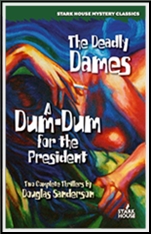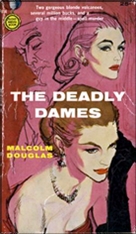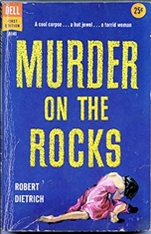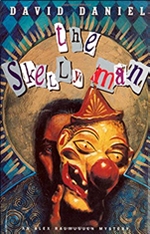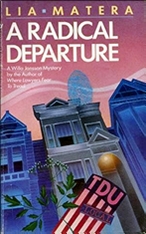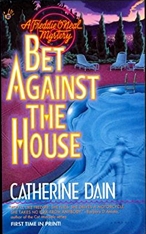Wed 27 Sep 2023
Mystery Review: W. T. BALLARD – Pretty Miss Murder.
Posted by Steve under Bibliographies, Lists & Checklists , Characters , Reviews[2] Comments
W. T. BALLARD – Pretty Miss Murder. Max Hunter #1. PermabookM-4228, paperback original,; 1st printing, December 1961. Never reprinted.
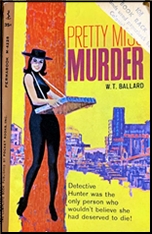
Back when this book was published, I’m going to assume that Ballard was correct and that in order to get a job working in Clark County, Nevada, and Reno in particular, you had to fill out an application from the sheriff’s office, and be accepted. That’s where Lt. Max Hunter first encounters a vivacious young brunette who’s hoping to start working at a local casino as a cigarette girl while in the state seeking a divorce.
The attraction is immediate, and is only doubled when he meets again on the job. (As described, she looks exactly like the girl on the cover. (*)) Any further relationship is nipped in the bud, however, when the girl’s body is found later dumped beside a highway leading out of town.
Hunter takes her death personally, of course, but what he learns is both surprising and disturbing, to say the least. All her life she has been known for leading men on and as a conniving (I can’t use the word) and has even been disowned by her aunt and uncle who raised her.
Even though thoroughly disillusioned, Hunter continues on the case anyway, which, as it turns out, involves a well known racketeer who is trying to track down the girl’s husband, who has gone missing with $250,000 of the gang boss’s money. As an unexpected twist in the plot at the time, Hunter and Johnny Blessing find it mutually worthwhile to team up together, if only for a while.
It’s a fun, fast-moving story, the only flaw in which is Ballard describes his characters so well that … well, in my opinion, when they act out of character, something’s wrong. Hunter ought to have trusted his instinct more. I knew exactly what was happening, even as all the while Ballard, as the man in charge of telling the story, was doing his best to divert attention away.
You might think this would take away the enjoyment of reading to learn how things work out, which they do, but it doesn’t, and all of the threads are tied up tightly at the end. It’s a smooth professional piece of writing, produced by a longtime pulp writer who didn’t dry up and quit when the pulps died. It’s not really a hardboiled novel, only medium boiled at best, but on that basis, of you’re still with me, I’d say you’d have fun with this one, too.
—
(^) The cover shown is that of the copy I own, which Ive had for a very long time. Amusingly enough, while I’m not sure you can make it out, but what the girl is selling are spelled out as “cigaretts.” Also note the mutilated cover, with the upper right corner clipped off. This is was often done by those paperback swap shops commonly found almost everywhere a few years back so that books deemed unworthy could not be used to be traded back into the store again. The book cost me ten cents, which to me was a dime well spent, now finally at last.
The Max Hunter series —
Pretty Miss Murder (1961)
The Seven Sisters (1962)
Three for the Money (1963)
